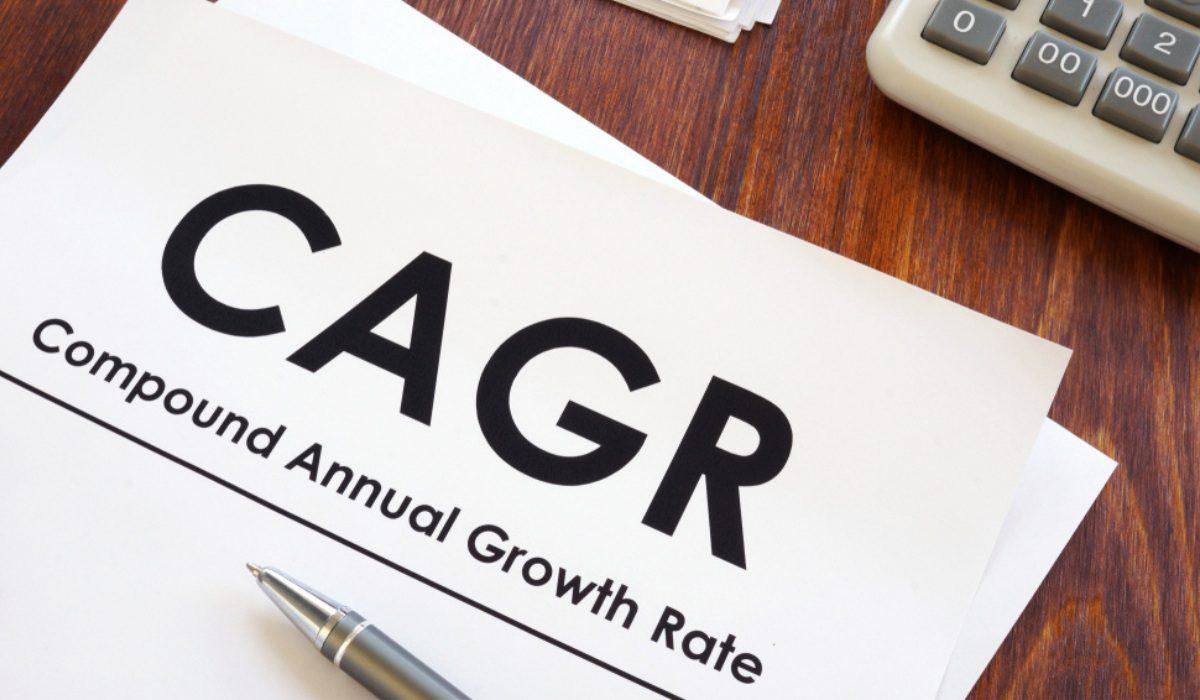What is a CAGR Calculator? How to Measure Your Investment Growth Easily

You know that feeling when you check your investment account and see it's worth more than when you started? That little rush of excitement? Yeah, I get it too. But here's the thing – just knowing your account balance went up doesn't reveal the complete picture.
I learned this the hard way when I began investing. I'd examine my portfolio and think, "Sweet! I made 40% in three years!" without realizing that worked out to only about 12% per year. Meanwhile, my buddy was boasting about his 25% profit over two years (also about 12% annually), and I thought he was demolishing it compared to me.
That's when I discovered CAGR – and it transformed everything about how I analyze investments. Whether you're just starting out with a few hundred dollars or you're managing a business trying to monitor growth, understanding your actual annual growth rate is a game-changer.
What Exactly is CAGR?
CAGR stands for Compound Annual Growth Rate, but don't let the fancy terminology intimidate you. It's actually pretty straightforward: it's the steady rate your investment would need to expand each year to get from where you started to where you are now.
Think of it like this – imagine your investment grew at exactly the same percentage every single year. CAGR tells you what that rate would be.
Here's a real example: My neighbor invested $5,000 in a stock three years ago, and now it's worth $7,000. Sure, that's a 40% total return, but the CAGR is about 12%. That means if the stock had expanded at exactly 12% each year, she'd have ended up with the same amount.
Year 1: $5,000 × 1.12 = $5,600 Year 2: $5,600 × 1.12 = $6,272 Year 3: $6,272 × 1.12 = $7,025
Awesome, right? Now she can easily compare that 12% to other investments or see how she's performing against the market.
Why You Need a CAGR Calculator
Look, I'll be honest – you can calculate CAGR by hand, but why would you want to? A CAGR Calculator handles the heavy lifting for you in seconds, and you don't have to worry about messing up the math.
I've tried calculating CAGR manually more times than I care to admit, and I've made plenty of errors. Getting the exponents wrong, forgetting to subtract 1 at the end, using the incorrect number of years – it's easier to mess up than you'd think.
Quality calculators also display extra stuff like charts and comparisons that can really help you understand your performance. Plus, when you're evaluating multiple investments, you can run through calculations quickly instead of spending your whole evening with a calculator.
How to Calculate CAGR Step by Step
Okay, but maybe you're like me and you want to comprehend what's happening behind the scenes. Here's how to do it manually:
The formula is: CAGR = (Ending Value ÷ Beginning Value)^(1 ÷ Number of Years) - 1
Let's walk through it: Say you put $1,000 into a mutual fund 5 years ago, and now it's valued at $1,500.
Step 1: Divide your ending value by your starting value $1,500 ÷ $1,000 = 1.5
Step 2: Figure out your exponent 1 ÷ 5 years = 0.2
Step 3: Raise 1.5 to the power of 0.2 1.5^0.2 = 1.0845 (you'll need a calculator for this part)
Step 4: Subtract 1 and convert to percentage 1.0845 - 1 = 0.0845 = 8.45%
So your investment expanded at an annual rate of 8.45%. Not bad!
Why Online Calculators Are So Much Better
After doing this calculation dozens of times, I can tell you that using a quality online calculator is the way to go. Here's why:
You won't make errors: Those exponent calculations are tricky, and it's easy to mess up. CAGR calculators get it right every time.
It's lightning fast: What takes me 5 minutes to calculate and double-check takes a calculator about 5 seconds.
You get bonus features: Many calculators will display charts, let you compare different scenarios, or even project future growth. It's like having a mini financial analyst on your computer.
You can run multiple scenarios: Want to see how your portfolio would perform with different growth rates? Easy – just plug in different numbers and see what happens.
Where I Actually Use CAGR
Here are the ways I utilize CAGR in real life:
Checking my stock picks: I compare my individual stocks against the S&P 500's long-term average of about 10% per year. If my stock selections aren't beating that, I need to ask myself why I'm not just buying index funds.
Evaluating my business: I operate a small side business, and I monitor revenue CAGR to see if I'm actually growing or just having good and bad months. Last year, my revenue CAGR was 18%, which felt pretty good.
Comparing investment options: When I'm examining different mutual funds, I check their 5-year and 10-year CAGR to see which ones have consistently performed better.
Setting realistic goals: If I want my portfolio to double in 10 years, I need about a 7.2% CAGR. Now I know what I'm aiming for.
Real estate decisions: When I was considering purchasing rental property, I calculated the CAGR including both rental income and appreciation. It helped me see that my money might be better off in the stock market.
The Stuff CAGR Doesn't Tell You
CAGR is fantastic, but it's not perfect. Here's what it doesn't reveal:
How bumpy the ride was: Two investments might both have a 10% CAGR, but one might have been a smooth climb while the other was a roller coaster. CAGR smooths out all that volatility.
When you added or withdrew money: If you kept adding money to your investment account, CAGR won't account for that. It assumes you put in a lump sum and left it alone.
How risky it was: A 15% CAGR from purchasing lottery tickets is very different from a 15% CAGR from a diversified portfolio. CAGR doesn't measure risk.
Market timing matters: If you calculate CAGR from 2007 to 2017, you're including the financial crisis. Calculate from 2009 to 2019, and you get a very different scenario.
CAGR vs. Other Ways to Measure Growth
You might be wondering how CAGR compares to other methods of measuring returns:
Average annual return: This is just adding up all your yearly returns and dividing by the number of years. But it doesn't account for compounding, so it's not as precise as CAGR.
Total return: This tells you how much you earned overall, but it doesn't factor in time. A 50% total return over 10 years is very different from 50% over 2 years.
Internal Rate of Return (IRR): This is more complex and accounts for when you add or remove money. It's more accurate for complex situations, but CAGR is easier to understand and calculate.
For most of us regular investors, CAGR strikes the right balance between being precise and being simple enough to actually utilize.
What I've Learned About Using CAGR
After using CAGR for years, here are my biggest takeaways:
Use longer time periods: Don't get too excited or worried about short-term CAGR. I examine at least 3-5 years to smooth out the noise.
Compare apples to apples: Make sure you're comparing similar investments. The CAGR of a bond fund should be compared to other bond funds, not to growth stocks.
Don't forget about fees: If your mutual fund has a 2% annual fee, that comes right off your CAGR. A fund with 12% returns and 2% fees gives you a 10% CAGR.
Check regularly but don't obsess: I calculate CAGR quarterly for my main investments, but I try not to make major changes based on short-term fluctuations.
The Bottom Line
CAGR isn't just some fancy financial term – it's a practical tool that helps you understand how your investments are really performing. It cuts through the noise and gives you a clear picture of your annual growth rate.
The best part? You don't need to be a math genius to use it. With a good calculator, you can get your CAGR in seconds and start making better decisions about your money.
Whether you're trying to figure out if your 401k is on track, comparing different investment options, or just want to see how you're doing compared to the market, CAGR gives you the clarity you need.
Ready to Check Your Investment Performance?
Stop wondering how your investments are really doing and find out for sure. Head over to a reliable CAGR calculator and plug in your numbers. It takes less than a minute, and you might be surprised by what you discover.
And hey, if you're like me and prefer to track things over time, create a simple spreadsheet where you can calculate CAGR for all your investments. Update it every quarter and you'll start to see patterns that can help you make smarter decisions.
Your future self will thank you for taking the time to understand your actual returns instead of just hoping for the best.
- Art
- Causes
- Crafts
- Dance
- Drinks
- Film
- Fitness
- Food
- Games
- Gardening
- Health
- Home
- Literature
- Music
- Networking
- Other
- Party
- Religion
- Shopping
- Sports
- Theater
- Wellness



